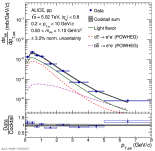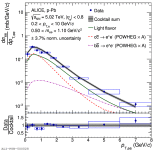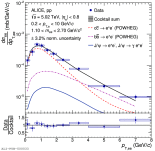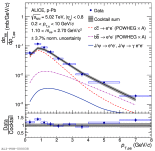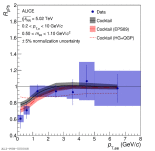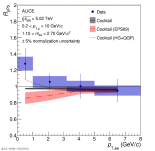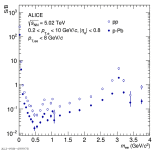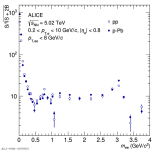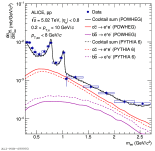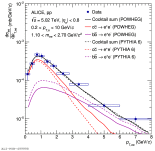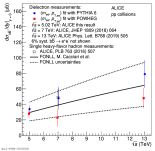Figures from paper submitted to Physical Review C
Abstract:
The first measurements of dielectron production at midrapidity ($|\eta_{c}|<~0.8$) in proton-proton and proton-lead collisions at $\sqrt{s_{\rm{NN}}}$ = 5.02 TeV at the LHC are presented. The dielectron cross section is measured with the ALICE detector as a function of the invariant mass $m_{\rm{ee}}$ and the pair transverse momentum $p_{\rm{T,ee}}$ in the ranges $m_{\rm{ee}}$ <~ 3.5 GeV/$c^{2}$ and $p_{\rm{T,ee}}$ <~ 8.0 GeV/$c^{2}$, in both collision systems. In proton-proton collisions, the charm and beauty cross sections are determined at midrapidity from a fit to the data with two different event generators. This complements the existing dielectron measurements performed at $\sqrt{s}$ = 7 and 13 TeV. The slope of the $\sqrt{s}$ dependence of the three measurements is described by FONLL calculations. The dielectron cross section measured in proton-lead collisions is in agreement, within the current precision, with the expected dielectron production without any nuclear matter effects for $\rm{e}^{+}\rm{e}^{-}$ pairs from open heavy-flavor hadron decays. For the first time at LHC energies, the dielectron production in proton-lead and proton-proton collisions are directly compared at the same $\sqrt{s_{\rm{NN}}}$ via the dielectron nuclear modification factor $R_{\rm{pPb}}$. The measurements are compared to model calculations including cold nuclear matter effects, or additional sources of dielectrons from thermal radiation.
Phys. Rev. C102(2020)055204
e-Print: arXiv:2005.11995 | PDF | inSPIRE


